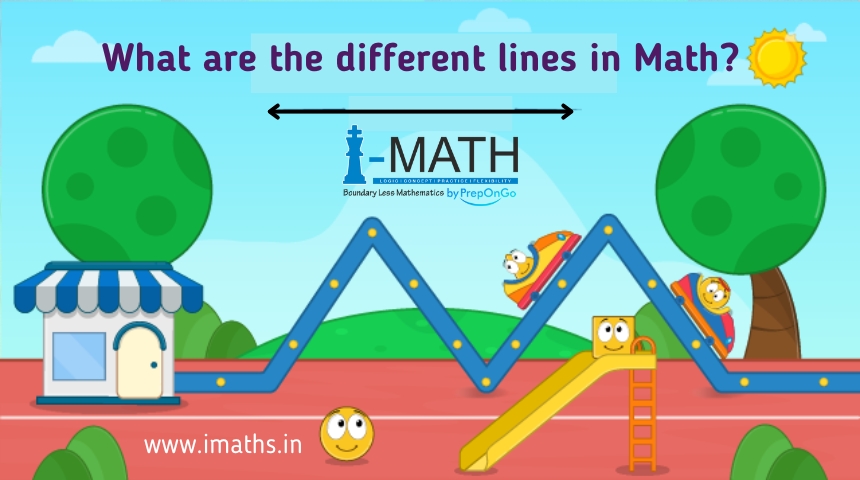What are the different lines in Math?

Have you ever drawn a straight line with a ruler? In math, these perfectly straight paths are called lines, and they come in different flavors, each with its own special properties. Let’s jump in and explore some of the most common lines you’ll encounter in your math adventures!
The Straight Shooters: Vertical and Horizontal Lines
Imagine a tall tree reaching for the sky. That’s a perfect example of a vertical line. It goes straight up and down, always perpendicular (perfectly at a 90-degree angle) to the ground, which we represent as the horizontal line (x-axis). A horizontal line, like a calm sea horizon, stretches infinitely to the left and right, never going up or down.
The Slant Squad: Diagonal Lines
Not all lines are so strict! Diagonal lines lean from one side to the other, neither perfectly vertical nor horizontal. They can slant upwards to the right or upwards to the left, depending on their direction.
The Parallel Bunch: Keeping the Same Distance
Imagine two train tracks running side-by-side. Those are like parallel lines. They never meet, no matter how far you extend them, and they always stay the same distance apart.
The Perpendicular Posse: Meeting at a Right Angle
Think of a giant T-junction. The vertical part of the T and the horizontal bar at the top are perpendicular lines. They intersect (cross each other) at a precise 90-degree angle, just like a perfect square corner.
Lines in Action: Why They Matter
Lines aren’t just for drawing pictures! They play a crucial role in many areas of math. Here’s a glimpse:
- Geometry: Lines are the building blocks for shapes like squares, rectangles, triangles, and more. Understanding lines helps you analyze angles, shapes, and their properties.
- Graphs: Lines on a graph connect points to show how things change. For example, a line might show how the temperature increases over time.
- Equations: We can use lines to represent equations! The slope of a line tells us how much the line slants, which can be linked to the mathematical formula behind the equation.
So next time you see a line, remember, it’s not just a simple drawing! It’s a key player in the wonderful world of math, helping us understand shapes, visualize changes, and solve problems.




